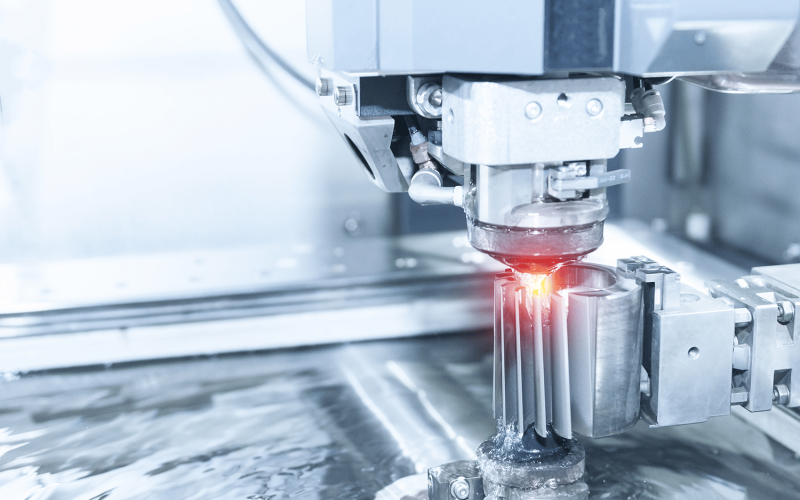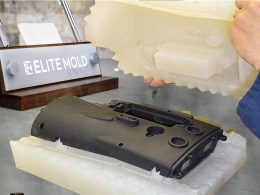In the evolving world of precision engineering, manufacturers increasingly rely on advanced machining technologies to create complex components with tight tolerances and high-performance materials. One such technology that has revolutionized how parts are made is manufacturing edm. This process, known as Electrical Discharge Machining (EDM), enables manufacturers to produce intricate shapes in hard materials with exceptional accuracy, without relying on conventional cutting tools.
This article explores how EDM works, its advantages and limitations, the industries that depend on it, and how it continues to evolve with technology.
What Is Electrical Discharge Machining?
Electrical Discharge Machining is a non-traditional method of removing material from a workpiece using electrical sparks. The process involves creating a controlled spark between two electrodes—one being the workpiece and the other the tool—submerged in a dielectric fluid. The repeated sparking erodes the material in very fine layers, making it ideal for high-precision work.
There are two primary types of EDM:
- Wire EDM: Utilizes a thin wire that acts as an electrode and cuts through the material with incredible precision.
- Sinker EDM: Involves a shaped electrode that is pressed into the workpiece to create detailed cavities, especially useful in mold making and tooling.
Since no mechanical force is applied, EDM is especially suited for materials that are hard, brittle, or require fine details.
How the EDM Process Works
At its core, EDM removes material by generating electrical discharges between the electrode and the workpiece. These are the key components:
- Electrode – The tool (wire or shaped form) that transmits electric current.
- Workpiece – The material being machined, which must be electrically conductive.
- Dielectric Fluid – A non-conductive liquid that supports spark generation, cools the work area, and flushes away debris.
When voltage is applied, a spark jumps across the tiny gap between the tool and the workpiece, melting a microscopic portion of the material. This spark occurs thousands of times per second, gradually eroding the surface to the desired shape or feature.
Advantages of EDM in Manufacturing
1. Ultra-High Precision
EDM can achieve tolerances of less than ±0.0001 inches. This level of precision is necessary in industries where even microscopic deviations can lead to part failure or reduced performance.
2. No Contact, No Distortion
Because EDM is a non-contact process, there is no mechanical force on the part. This eliminates deformation, which is especially important when working with thin, fragile, or heat-sensitive materials.
3. Works with Hard Materials
EDM easily machines tough alloys like hardened steel, Inconel, and tungsten carbide. These materials are often difficult or impossible to machine with traditional tools.
4. Complex Geometries and Internal Features
EDM is ideal for producing complex internal cavities, sharp corners, and intricate contours that would be costly or impractical to create with milling or turning.
5. Smooth Surface Finish
EDM produces excellent surface finishes, often eliminating the need for secondary polishing or grinding. This benefit shortens production times and reduces overall costs.
Limitations of EDM
While EDM offers many advantages, it is not suited for every project:
- Conductivity Required: Only electrically conductive materials can be machined with EDM. Plastics, glass, and ceramics are excluded.
- Slower Process Speeds: Material is removed slowly, making EDM less efficient for high-volume or large-part production.
- Electrode Wear: In sinker EDM, the tool electrode gradually wears down, which can affect accuracy and increase costs if frequent replacements are needed.
- Cost Considerations: The process requires specialized machines, electrodes, and dielectric fluids, which can lead to higher operational expenses.
Common Applications of EDM
Aerospace Industry
Aerospace components often involve intricate geometries and advanced materials that must meet strict tolerances. EDM is used to fabricate turbine blades, fuel system parts, and engine components where reliability and performance are non-negotiable.
Medical Device Manufacturing
EDM is instrumental in producing surgical tools, implants, and other medical components. Its ability to deliver micro-scale precision and smooth finishes helps meet strict regulatory standards and ensures patient safety.
Automotive Sector
In automotive applications, EDM is used to manufacture dies, fuel injectors, and transmission components. It’s also widely used in R&D and prototyping due to its flexibility and ability to work with hardened materials.
Electronics and Micro-Manufacturing
As electronics become smaller and more complex, EDM plays a vital role in fabricating fine parts like connectors, sensor housings, and micro-switches. Wire EDM, in particular, is ideal for cutting micro-scale components with high accuracy.
Tool and Die Making
EDM has long been a staple in the tool and die industry. Whether it’s stamping dies or injection mold cavities, EDM enables the creation of detailed and durable tools essential for mass production.
The Future of EDM: Digital Integration and Smart Manufacturing
As smart manufacturing becomes the standard, EDM is being enhanced by new digital tools:
- CNC and CAM Software: Today’s EDM machines are fully integrated with CAD/CAM systems, allowing precise control of tool paths and simulations before cutting.
- Real-Time Monitoring: IoT-enabled machines now provide continuous monitoring and feedback, reducing downtime and improving part quality.
- Advanced Fluids and Automation: Innovations in dielectric fluids and electrode materials improve efficiency, while automation reduces labor costs and increases throughput.
These advancements ensure EDM remains at the cutting edge of modern manufacturing.
Choosing an EDM Partner: What to Look For
If you’re considering EDM for your manufacturing project, partnering with the right service provider is essential. Here are key criteria to evaluate:
- Technical Expertise: Skilled machinists and engineers with EDM experience are crucial for achieving desired results.
- Modern Equipment: Look for shops with up-to-date wire and sinker EDM machines capable of tight tolerances and complex shapes.
- Certifications: ISO 9001 or AS9100 certifications indicate quality management and compliance with industry standards.
- Custom Support: A responsive team that understands your application and can guide you through design-for-manufacturing is a valuable asset.
Working with an experienced EDM provider reduces risk, shortens lead times, and improves overall project success.
When Should You Use EDM?
EDM isn’t the solution for every job, but it excels when your application involves:
- Hard or heat-treated metals
- Precision geometries and micro-features
- No tolerance for mechanical stress
- Extremely fine surface finishes
- Mold or tool cavities with deep pockets and sharp corners
In those cases, EDM offers capabilities that no other process can match—making it the go-to method for many manufacturers with demanding specs.
Conclusion
Electrical Discharge Machining has earned its place in the world of advanced manufacturing by delivering precision, complexity, and reliability that traditional methods can’t offer. While it has some limitations, its ability to produce intricate parts from hard materials without introducing stress or distortion makes it indispensable in many industries.
As manufacturing continues to evolve, EDM will remain a critical technology for companies that require the highest levels of accuracy and design flexibility. Whether you’re building aerospace components, surgical tools, or complex dies, EDM offers a solution where other machining processes fall short.












